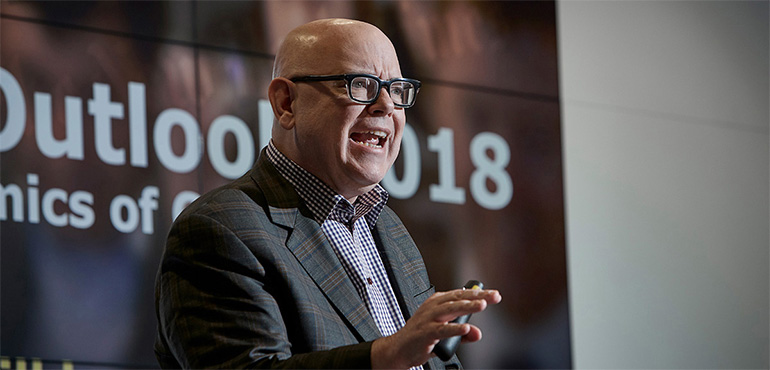
Digital subscriptions and newsletters
”Trump is the best thing that has happened to news media in the last hundred years.” ”Netflix and Spotify are paving the way for digital news media subscriptions .” Earl Wilkinson is Executive Director and CEO of the International News Media Association (INMA) and is happy to proclaim his views on the current state and future of media. Wilkinson visited Finland at the end of February.
According to Wilkinson, we are currently living in extremely interesting times. In recent years, we have truly seen what it means for anyone to be able to be a publisher. The rise of populists has made many news media underline facts even more carefully than before.
”Modern technology has meant that there is now an abundance of content – information, journalism, opinions and chatter. Publication platforms like Facebook have also emerged which are good at pulling together chatter but bad at managing it.”
”I don’t think that anyone saw this trend coming twenty years ago – that we could now be in a situation where anyone can be a publisher and publication platforms can be used to spread false information and use it like weapons. This has also managed to shake peoples’ belief in institutions”, Wilkinson ponders.
The belief in institutions has further been shaken by fake news websites. According to Wilkinson, we must not be content to watch this development from the sidelines.
”Opinion-based media, such as Breitbart in the United States, have begun to portray themselves as fact-based media. Breitbart is naturally entitled to its opinions, but it is worth noting that it is specifically an opinion-based medium and stretches facts freely. We must rise up against such trends”, says Wilkinson.
In addition to technology, media has also been successfully influenced by individual persons. According to Wilkinson, Trump’s election as president has fundamentally changed media in the United States. Quality media outlets, such as the Washington Post, New York Times and CNN, have started to fight back.
”The task of journalism in a democracy is to question the ruling powers and bring their actions to light. Right now, the American news media is doing a great service to democracy. Instead of beating around the bush, quality media have directly started calling out lies and, for the first time, they have become a kind of opposition,” Wilkinson assesses.
Wilkinson says that he is worried about trust bubbles and still uncertain as to how trust will be rebuilt in the post-Trump era.
”Anything that CNN says, for example, falls on deaf ears in the case of many Trump supporters. They simply have no trust in the channel at all. It is legitimate to ask whether this trust can ever be regained once Trump is no longer in office. Will the news media somehow reposition themselves? I don’t know what direction things will take,” says Wilkinson.
Sharing best practices
Media have also been plagued in recent years by the collapse of the traditional earning logic. Despite all this, Wilkinson feels confident about the future of media. He estimates that support for securing media revenue streams may even come from a somewhat surprising direction.
”It seems that the most optimistic way forward is digital subscriptions. They will not necessarily solve all the media’s problems, nor will they alone preserve journalism in its current extent, but I think they are the best method I have seen since digitalisation dismantled the traditional business model of media.”
”For digital subscriptions, services like Netflix and Spotify are the news media’s best friends. They have considerably changed consumer attitudes and behaviour and have made them think that it is perfectly all right to give companies their credit card details and allow them to charge monthly payments.”
Media agencies around the world are currently trying out various revenue models and learning more and more about their readers and contents through data. Wilkinson considers it important that the media agencies also share their observations and best practices with each other. What kind of content produces the most digital subscriptions? Which content raises brand value? What works best in social media? And how can we most effectively engage new subscribers? In addition to new methods, Wilkinson encourages media agencies to try out traditional methods as well, just with a slightly new approach.
”If we want readers to access our content directly instead of, say, via search engines and social media, the best method is good old newsletters. For example, the Boston Globe currently has 31 different newsletters aimed at digital subscribers and controlled by algorithms,” explains Wilkinson.
Updated to 2018, newsletters can be a content product customised for small special audiences, covering topics dealing with just about anything – news, opinions, Australian league rugby or even obituaries.
”There’s a certain magic in this. We are now beginning to understand the economics of content in an entirely new way,” concludes Wilkinson.
- Published: 3.4.2018 00:00
- Category: News
- Theme: Sustainable Media